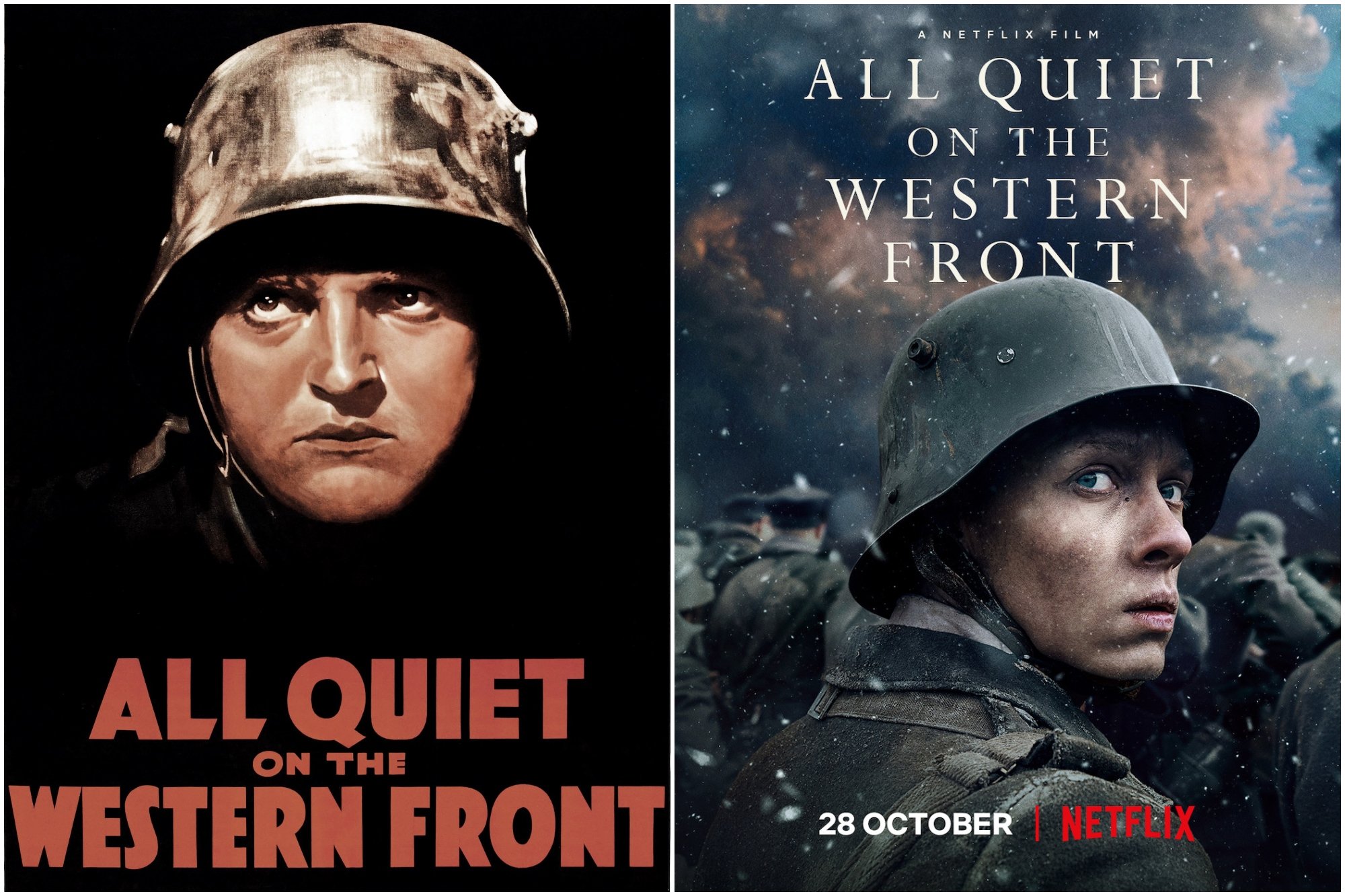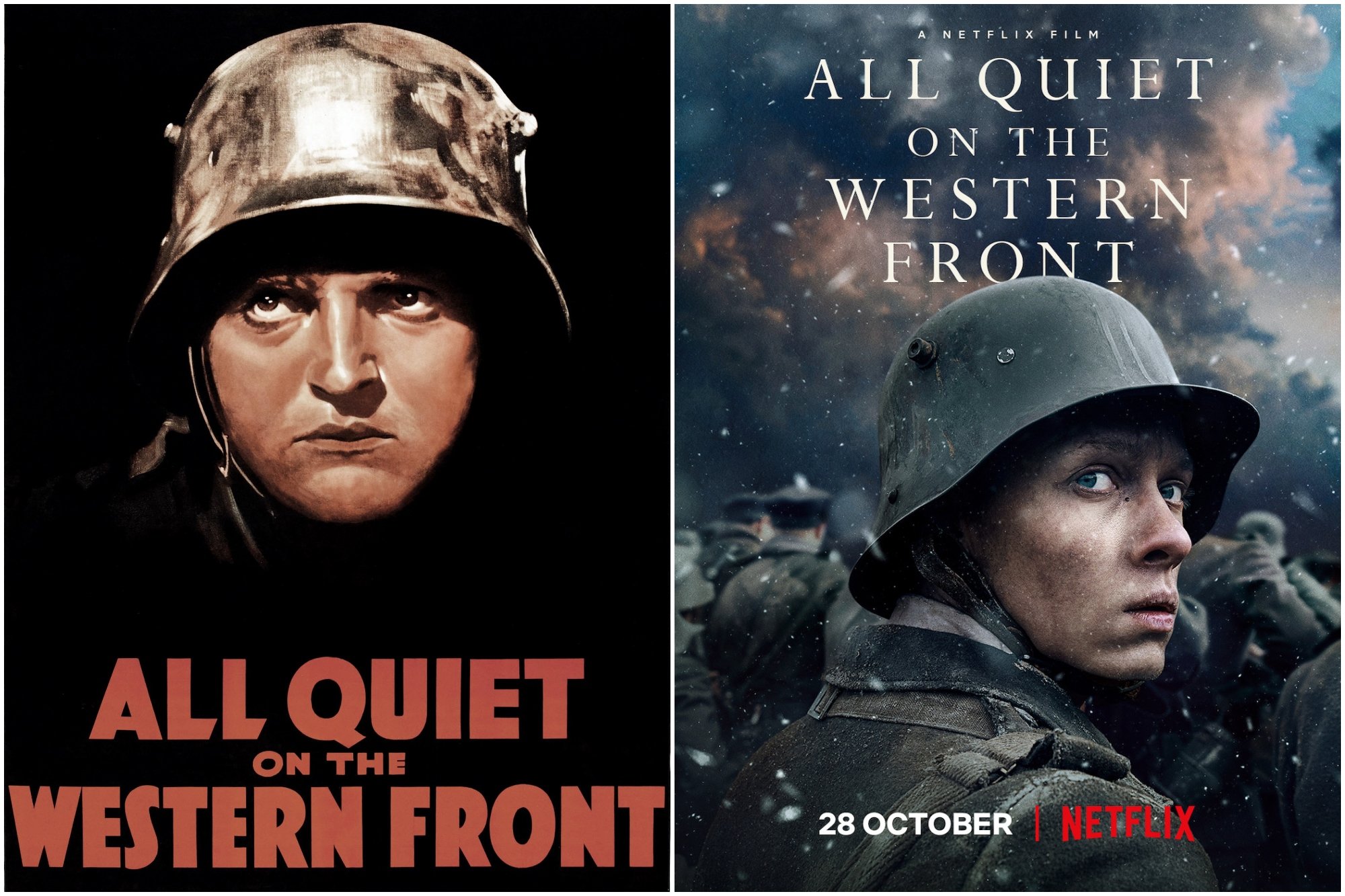
How ‘All Quiet on the Western Front’ 2022 Is Different From the 1930 Classic
Co-writer/director Edward Berger brought the story of All Quiet on the Western Front back for audiences around the world to experience the story with modern filmmaking techniques. However, it left some viewers wondering why there’s a need to make another movie adaptation after the 1930 classic and the 1979 TV movie. Well, the 2022 All Quiet on the Western Front is quite different from the other iteration, presenting a new look at a familiar story. Here’s a look at the most substantial variations that set the Oscar Best Picture-winning 1930 version apart from the 2022 iteration.
[Spoiler alert: This article contains spoilers from 2022’s All Quiet on the Western Front.]
‘All Quiet on the Western Front’ 2022 isn’t a remake

Berger’s All Quiet on the Western Front is different because it isn’t a remake, as some may believe. It doesn’t look to either of the previous on-screen iterations for inspiration or guidelines. Rather, Berger and co-writers Lesley Paterson and Ian Stokell looked back to Erich Maria Remarque’s original 1929 novel. It’s a re-adaptation that wants to tell another version of the story.
Additionally, this is the first German adaptation of All Quiet on the Western Front. The film follows the perspective of a German soldier named Paul Bäumer (Lew Ayres in 1930, Felix Kammerer in 2022) during World War I. As a result, the movie is already bringing a unique perspective to the table that isn’t offered in the current line of adaptations. Berger’s anti-war adaptation highlights the tremendous number of lives lost in an act of pure horror.
The new ‘All Quiet on the Western Front’ gives Paul a different narrative
The first All Quiet on the Western Front adaptation gave a lot more emphasis to Paul’s life before joining the Army. He hears a passionate speech filled with propaganda from Professor Kantorek (Arnold Lucy). As a result, Paul and his friends decide to join the Army under the romanticized ideas of heroism.
War isn’t anything that the group of young men expected. Paul is severely injured, but he manages to walk away with his life for the time being. He gets furlough and visits his family back home. However, Paul discovers that the public isn’t informed on what is actually going on on the front lines. His frustration erupts when he visits his old classroom, where Professor Kantorek invites him to speak. When Paul opens up about the horrors of war, he’s met with insults aimed at his bravery.
Meanwhile, the 2022 All Quiet on the Western Front is different in changing Paul’s journey a bit. The classroom is cut entirely. Paul forges his father’s signature on the paperwork and lies his way into the Army to prove that he can survive it. They still romanticize the war and hear propaganda speeches from figures of authority, but it isn’t a professor in a classroom. The audience doesn’t get to see exactly where these ideas come from.
Berger puts Paul through the wringer, but he never truly gives him any physical or emotional reprieve. The character makes a return back home to see his family in the 1930 adaptation, but the 2022 movie keeps him with the Army for almost the film’s entire running time. Kat (Louis Wolheim in 1930, Albrecht Schuch in 2022) is the most positive influence on Paul, and while he dies in both iterations, the circumstances are quite different. In the first adaptation, a bomb drops near him after injuring his leg, while it’s a fatal gunshot wound from a local farmer’s child in Berger’s version. Nevertheless, the impact remains the same, as Paul loses the will to live for a future after the war.
Regardless of whether you’re watching 1930’s All Quiet on the Western Front or the 2022 adaptation, the events surrounding Paul’s death are rather different. Paul is forced back into combat with his fellow German soldiers for one final strike in the 2022 iteration, as he dies as a result of a stab wound after engaging in brutal close combat. Meanwhile, he’s shot by a sniper in the 1930 adaptation while reaching out for a butterfly.
There’s greater emphasis placed on another battle taking place
Berger’s All Quiet on the Western Front introduced a different narrative outside of the battlefield. Instead of giving Paul furlough, the audience follows another form of battle between those with actual power to put a stop to the war and all of that death. There are some negotiations, but they must come to a consensus on the contract before they can officially end it.
Additionally, some high-ranking soldiers enjoy exquisite meals, which contrasts with the limited food and resources on the battlefield. Berger explores the disparity between those losing their lives and those who are comfortably fighting a political war behind the scenes. It further exposes the value that authority saw in each soldier’s life.
A major difference between the two All Quiet on the Western Front adaptations is how closely they desire to follow Remarque’s original text. The first adaptation sticks a bit closer to its narrative, but the 2022 iteration drives home bigger points that Remarque is getting at with shifts in emphasis. They’re both getting at the anti-war concept that battle is a vicious cycle of death, terror, and grief, but Berger takes a very personal approach to Paul’s story and those who decided his fate.


